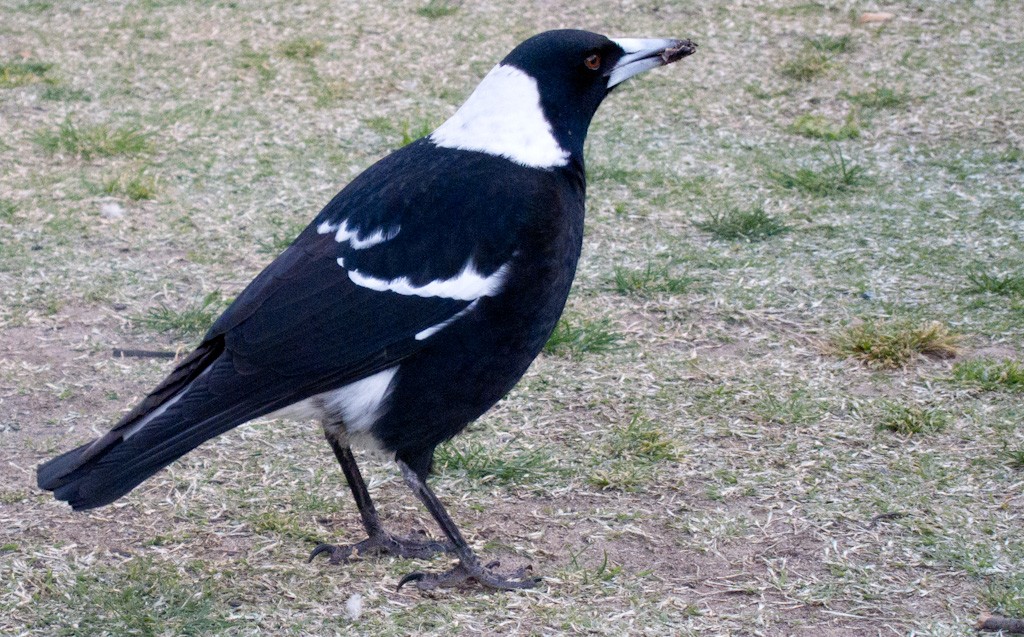Australian Magpie
A species of Australian Magpie, Also known as Maggie Scientific name : Gymnorhina tibicen Genus : Australian Magpie
Australian Magpie, A species of Australian Magpie
Also known as:
Maggie
Botanical name: Gymnorhina tibicen
Genus: Australian Magpie
Content
Description People often ask General Info
 Photo By Charles Haynes , used under CC-BY-SA-2.0 /Cropped and compressed from original
Photo By Charles Haynes , used under CC-BY-SA-2.0 /Cropped and compressed from original Description
Despite its name, the australian Magpie bears little resemblance to its North American or European cousins. For one thing, unlike its cousins' piercing squawk, the australian Magpie has a melodic song that is a pleasant addition to the Australian soundscape. It is also black and white, where its cousins have some shiny blue plumage. However, there is at least one similarity: like its cousins, the australian Magpie can terrify humans during nesting season as it dives and swoops at anyone coming near its nest or its fledglings.
Size
43 cm
Life Expectancy
30 years
Nest Placement
Tree
Feeding Habits
Australian Magpie are omnivores, foraging primarily on the ground for invertebrates, small vertebrates, and plant material. They exhibit diverse feeding behaviors, adapting to varied food sources and displaying unique food preferences.
Habitat
Australian Magpie generally occupy open terrains such as grasslands and fields, including human-altered landscapes like parks and suburban areas, where trees intersperse or skirt the edges. These birds thrive in eucalypt woodlands and also inhabit agricultural lands with native vegetation patches. Australian Magpie typically steer clear of dense forests but may occupy pine plantations featuring clearings that resemble their preferred open spaces.
Dite type
Omnivorous
People often ask
General Info
Feeding Habits
Bird food type
Behavior
The Australian magpie is almost exclusively diurnal, although it may call into the night, like some other members of the Artamidae. On the ground, the Australian magpie moves around by walking, and is the only member of the Artamidae to do so; woodswallows, butcherbirds and currawongs all tend to hop with legs parallel. Young birds display various forms of play behaviour, either by themselves or in groups, with older birds often initiating the proceedings with juveniles. 
Distribution Area
The Australian magpie is found in the Trans-Fly region of southern New Guinea, between the Oriomo River and Muli Strait, and across most of Australia, bar the tip of Cape York, the Gibson and Great Sandy Deserts, and the southwest of Tasmania. 
Species Status
Not globally threatened.
Scientific Classification
Phylum
Chordates Class
Birds Order
Perching birds Family
Butcherbirds Genus
Australian Magpie Species
Australian Magpie